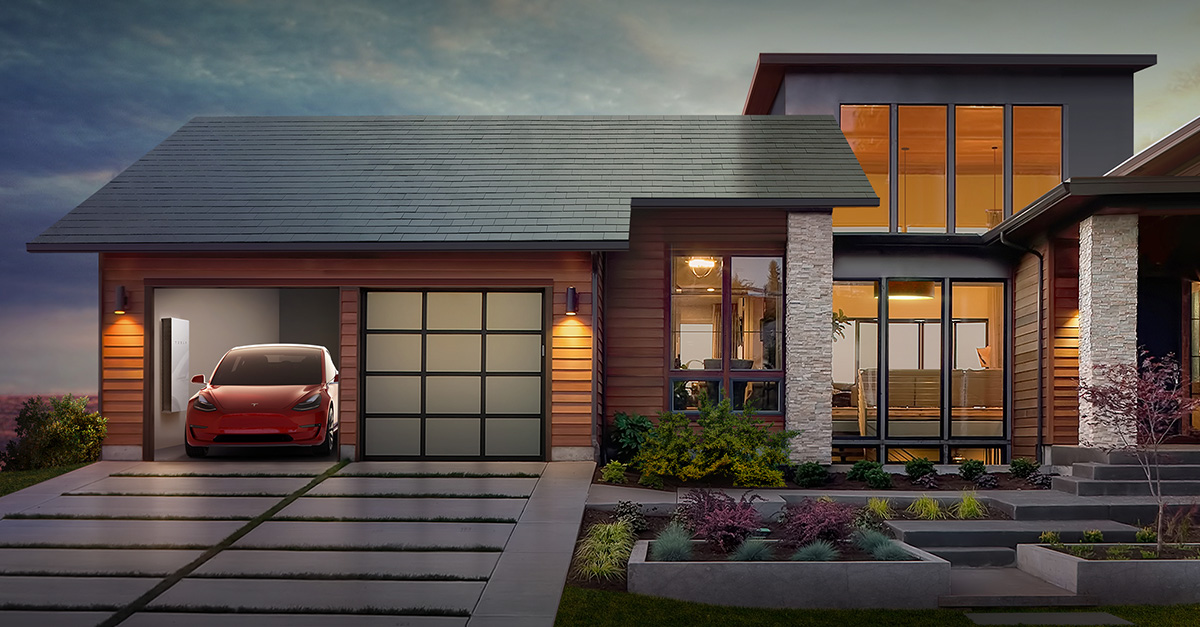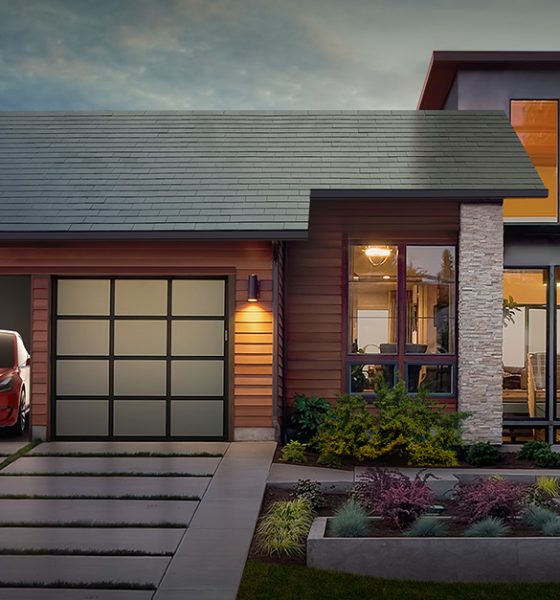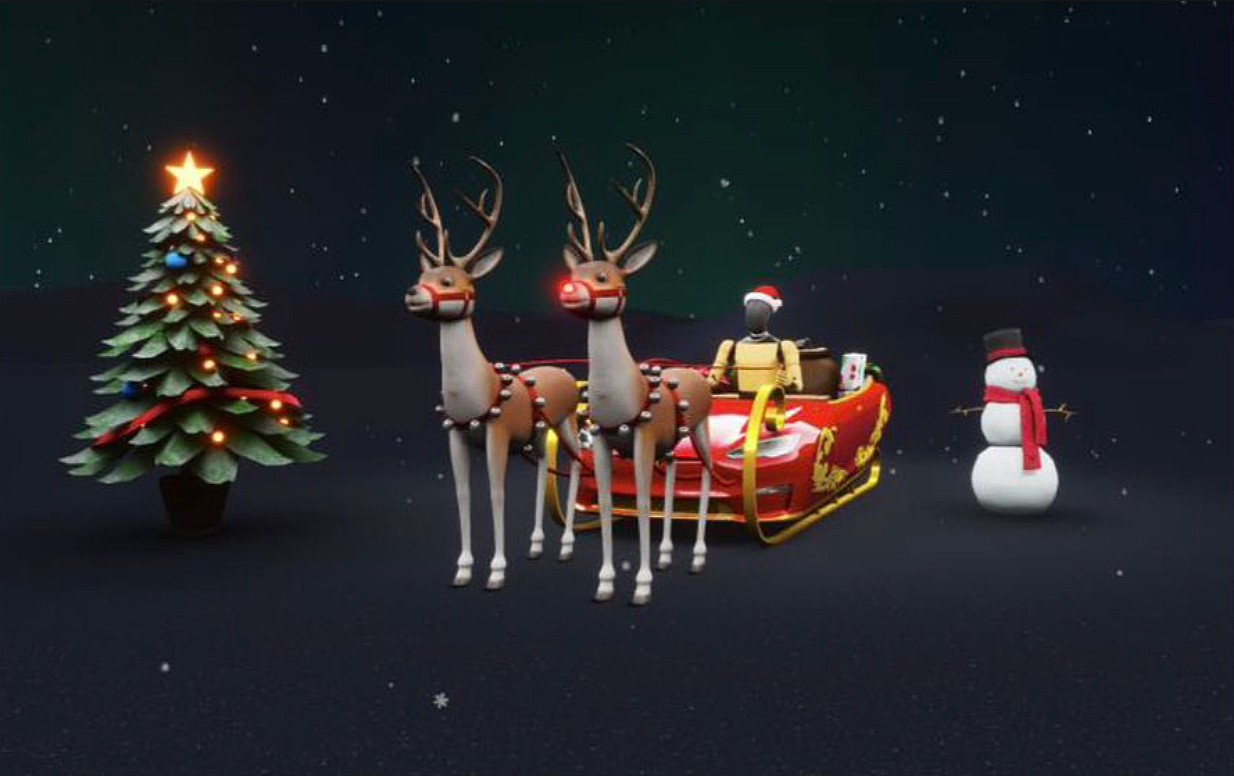

News
Roofing industry keeps close watch on Tesla Solar Roof as production nears
The first installation of Tesla’s highly anticipated Solar Roof product is expected to take place in the coming months, bringing the company one step closer to providing a comprehensive and arguably best looking “sun-to-vehicle” system possible. As we near the inaugural installations, those in the solar industry are keeping a close watch on the impact Tesla’s roll out will have on solar demand and the entire category as a whole.
Tesla’s Solar Roof glass tiles— offered in four styles of Tuscan, Slate, Textured, and Smooth— look like regular roof tiles from ground level, but embedded with photovoltaic solar cells underneath. Tesla claims the glass tiles are more resilient than traditional roof tiles, and the company guarantees them for the lifetime of the house. Sweetening the whole deal, Tesla— with the help of SolarCity, which it merged with in November 2016— includes the labor and materials of tearing down your old roof and installing the new in the purchase of a Solar Roof.
Tesla is not the first to produce solar tiles. In 2016, Dow Chemical stopped its production of solar shingles five years after it first launched them, citing the low efficiency and high costs of their product. Other companies, such as Forward Labs, already produce such a product, but none have the visibility and ability to capture the attention of the media like Tesla and Elon Musk.
Over the past few years, the growth of demand for residential solar installations has begun to slow: consumer preferences have shifted more to community-based systems, electricity prices have plummeted due to falling natural gas and oil prices, and utility companies have begun to push back against catering to those who want to go “off-the-grid.” In an industry with few recent and dramatic product-level innovations, the excitement over residential solar systems has been cooling. According to Forbes, installation growth rates dropped from 63% per year from 2013 to 2015, to merely 16% in 2016. Some believe that Tesla’s high-visibility and loyal consumer base can reinvigorate the market. Grace Robertson, marketing manager of LightWave Solar, a solar installation company not affiliated with Tesla, said that Tesla’s movement has prompted local interest in LightWave Solar and the solar industry as a whole.
“The Solar Roof announcement generated a buzz and we got a few more phone calls than usual,” wrote Robertson in a comment to Teslarati. “It gets people excited about solar.”
But Tesla’s product is not just a replacement for solar panels: it is a replacement for solar panels and the entire roof they sit on. This comes with a hefty price tag. Tesla has advertised that the cost of the solar roof, offset by tax breaks and generation of solar energy, will be competitive with the price of a more traditional roof made with comparable materials. But these “comparable materials”— slate, glass, and terra-cotta— do not include the asphalt shingles that top over 75% of American homes. That focuses the market down to the other 25%.
According to Tesla’s Solar Roof cost calculator, the estimated cost and benefit of a solar roof is highly dependent on one’s location, typical electricity bill, and square footage of your house. For a typical residence in Massachusetts of 2,400 square feet with a $215/mo electric bill, a solar roof in which 60% of tiles are solar panels, would cost $71,600, not including the addition of a Powerwall 2 home battery storage system. Offsetting the cost is the projected $99,300 worth of energy generated by the roof over 30 years in addition to a $20,400 federal tax credit. Over those 30 years, Tesla estimates the home-owner will earn a net $41,100. Not a bad deal, although re-roofing the same house with asphalt shingles would cost only around $11,000 to $17,000. For a similar-sized house in central Iowa, the Tesla calculator recommends a covering of 50% solar tiles for the roof, with an upfront price tag of $40,500 (plus a $7,000 Powerwall 2 battery) for a net cost of $7,100 over 30 years. Not as great a deal.
For some, high property taxes and already low electricity bills make these upfront costs even less attractive. As Senior Technology Editor at Ars Technica Lee Hutchinson pointed out on Twitter: “My 2600sqft **HOUSE** only cost $200k. My property taxes would explode w/adding another 50% onto the home’s appraised value [with a solar roof].”
This is true. The economics are not yet compelling where housing and utility costs are low and property taxes are high.
— Elon Musk (@elonmusk) May 10, 2017
Hutchinson lives in Texas, and expressed the concerns of many who wish they could buy into the solar roofs, but can’t get past the sticker shock. Elon Musk replied that he understood the concern over the high prices, tweeting: “This is true. The economics are not yet compelling where housing and utility costs are low and property taxes are high.”
Robertson, from LightWave Solar, noted that while Tesla’s product is bringing renewed interest to the solar industry, she does not expect the solar roof to significantly impact the sales of more traditional solar panels due to these high upfront costs.
“Since most of our customers want the most cost-effective solar solution, we don’t expect the Solar Roof to put much of a dent in our sales of traditional solar panels,” wrote Robertson.
However, in an op-ed for the San Francisco Tribune, CEO and founder of EnergySage Vikram Aggarwal, an online solar marketplace backed by the U.S. Department of Energy, argued that the buzz around Tesla’s Solar Roof may not be too good for traditional solar installers after all. Aggarwal wrote that before the tiles are installed and tested on real people’s houses, the uncertainty around the roof’s total cost and energy production will cause consumers to delay buying the product until more information is available. In the meantime, those who have become excited about solar energy are not giving business to local solar panel installers either.
“The Tesla Solar Roof should be viewed as a well-designed luxury roofing product first — its solar production benefits are an additional benefit, but not its core offering,” wrote Aggarwal. “Until more comprehensive, transparent information about the all-in costs of the Tesla Solar Roof are made available, his revolutionary product may only take the wind out of the rest of the solar industry’s sails.”
But for those who are already willing to pay for high-end roofing materials and who are looking to re-roof in the near future, the Solar Roof could be a great addition to their house and other Tesla products.
With the high costs and slow roll-out, the Solar Roof isn’t expected to immediately revolutionize the solar industry in the US. Most people probably will not see solar shingles in their neighborhood for several years yet. What it will do is push the solar industry back into the limelight for at least a few months and encourage consumers to reimagine a home powered by the sun in a new era of fashionable renewable energy. Tesla is not the first to bring accessible solar to residential areas, but it is the first in a long time to make it cool.
News
Tesla hints at Starlink integration with recent patent
“By employing polymer blends, some examples enable RF transmission from all the modules to satellites and other communication devices both inside and outside the vehicle.”

Tesla hinted at a potential Starlink internet terminal integration within its vehicles in a recent patent, which describes a vehicle roof assembly with integrated radio frequency (RF) transparency.
The patent, which is Pub. No U.S. 2025/0368267 describes a new vehicle roof that is made of RF-transparent polymer materials, allowing and “facilitating clear communication with external devices and satellites.”
Tesla believes that a new vehicle roof design, comprised of different materials than the standard metallic or glass elements used in cars today, would allow the company to integrate modern vehicular technologies, “particularly those requiring radio frequency transmission and reception.
Tesla has recently filed a US patent application on integrating RF transparent materials into the roof structure.
“facilitating clear communication with external devices and satellites”
Tesla fleet is getting @Starlink connectivity integration soon. LFG @Tesla @elonmusk… pic.twitter.com/bLa8YtPLd1
— Chansoo Byeon (@Chansoo) December 9, 2025
Instead of glass or metallic materials, Tesla says vehicles may benefit from high-strength polymer blends, such as Polycarbonate, Acrylonitrile Butadiene Styrene, or Acrylonitrile Styrene Acrylate.
These materials still provide ideal strength metrics for crashworthiness, stiffness for noise, vibration, and harshness control, and are compliant with head impact regulations.
They would also enable better performance with modern technologies, like internet terminals, which need an uninterrupted signal to satellites for maximum reception. Tesla writes in the patent:
“By employing polymer blends, some examples enable RF transmission from all the modules to satellites and other communication devices both inside and outside the vehicle.”

One of the challenges Tesla seems to be aware of with this type of roof design is the fact that it will still have to enable safety and keep that at the forefront of the design. As you can see in the illustration above, Tesla plans to use four layers to increase safety and rigidity, while also combating noise and vibration.
It notes in the patent that disclosed examples still meet the safety requirements outlined in the Federal Motor Vehicle Safety Standards (FMVSS).
Starlink integrated directly into Tesla vehicles would be a considerable advantage for owners. It would come with a handful of distinct advantages.
Initially, the inclusion of Starlink would completely eliminate cellular dead zones, something that is an issue, especially in rural areas. Starlink would provide connectivity in these remote regions and would ensure uninterrupted service during road trips and off-grid adventures.
It could also be a critical addition for Robotaxi, as it is crucial to have solid and reliable connectivity for remote monitoring and fleet management.
Starlink’s growing constellation, thanks to SpaceX’s routine and frequent launch schedule, will provide secure, stable, and reliable internet connectivity for Tesla vehicles.
Although many owners have already mounted Starlink Mini dishes under their glass roofs for a similar experience, it may be integrated directly into Teslas in the coming years, either as an upgrade or a standard feature.
News
Tesla supplements Holiday Update by sneaking in new Full Self-Driving version
It seems Tesla was waiting for the Hardware 4 rollout, as it wanted to also deploy a new Full Self-Driving version to those owners, as it appeared in the release notes for the Holiday Update last night.

Tesla has surprised some owners by sneaking in a new Full Self-Driving version with the wide release of the Holiday Update, which started rolling out to Hardware 4 owners on Friday night.
Tesla has issued a controlled and very slow release pattern with the Holiday Update, which rolls out with Software Version 2025.44.25.5.
For the past two weeks, as it has rolled out to Hardware 3 and older Tesla owners, the company has kept its deployment of the new Software Version relatively controlled.
It seems Tesla was waiting for the Hardware 4 rollout, as it wanted to also deploy a new Full Self-Driving version to those owners, as it appeared in the release notes for the Holiday Update last night.
Tesla Full Self-Driving v14.2.1.25 made its first appearance last night to Hardware 4 owners who are members of the Early Access Program (EAP). It appears to be a slight refinement from FSD v14.2.1, which has been out for a couple of weeks.
Tesla v2025.44.25.5 Holiday update incoming
Also Full Self-Driving v14.2.1.25!!! pic.twitter.com/74D7S0UGXz
— TESLARATI (@Teslarati) December 13, 2025
Many owners welcome the new FSD version, us included, because we’ve been less than impressed with v14.2.1. We have experienced some minor regressions with v14.2.1, especially with Speed Limit recognition, Speed Profile tinkering, and parking performance.
As it stands, Full Self-Driving is still particularly impressive, but Tesla is evidently having an issue with some of the adjustments, as it is still refining some of the performance aspects of the suite. This is expected and normal with some updates, as not all of them are an improvement in all areas; we routinely see some things backtrack every once in a while.
This new FSD version is likely to take care of those things, but it also includes all of the awesome Holiday Update features, which include:
- Grok with Navigation Commands (Beta) – Grok will now add and edit destinations.
- Tesla Photobooth – Take pictures inside your car using the cabin-facing camera
- Dog Mode Live Activity – Check on your four-legged friend on your phone through periodic snapshots taken of the cabin
- Dashcam Viewer Update – Includes new metrics, like steering wheel angle, speed, and more
- Santa Mode – New graphics, trees, and a lock chime
- Light Show Update – Addition of Jingle Rush light show
- Custom Wraps and License Plates – Colorizer now allows you to customize your vehicle even further, with custom patterns, license plates, and tint
- Navigation Improvements – Easier layout and setup
- Supercharger Site Map – Starting at 18 pilot locations, a 3D view of the Supercharger you’re visiting will be available
- Automatic Carpool Lane Routing – Navigation will utilize carpool lanes if enabled
- Phone Left Behind Chime – Your car will now tell you if you left a phone inside
- Charge Limit Per Location – Set a charge limit for each location
- ISS Docking Simulator – New game
- Additional Improvements – Turn off wireless charging pad, Spotify improvements, Rainbow Rave Cave, Lock Sound TRON addition
Tesla also added two other things that were undocumented, like Charging Passport and information on USB drive storage to help with Dashcam.
Cybertruck
Tesla updates Cybertruck owners about key Powershare feature

Tesla is updating Cybertruck owners on its timeline of a massive feature that has yet to ship: Powershare with Powerwall.
Powershare is a bidirectional charging feature exclusive to Cybertruck, which allows the vehicle’s battery to act as a portable power source for homes, appliances, tools, other EVs, and more. It was announced in late 2023 as part of Tesla’s push into vehicle-to-everything energy sharing, and acting as a giant portable charger is the main advantage, as it can provide backup power during outages.
Cybertruck’s Powershare system supports both vehicle-to-load (V2L) and vehicle-to-home (V2H), making it flexible and well-rounded for a variety of applications.
However, even though the feature was promised with Cybertruck, it has yet to be shipped to vehicles. Tesla communicated with owners through email recently regarding Powershare with Powerwall, which essentially has the pickup act as an extended battery.
Powerwall discharge would be prioritized before tapping into the truck’s larger pack.
However, Tesla is still working on getting the feature out to owners, an email said:
“We’re writing to let you know that the Powershare with Powerwall feature is still in development and is now scheduled for release in mid-2026.
This new release date gives us additional time to design and test this feature, ensuring its ability to communicate and optimize energy sharing between your vehicle and many configurations and generations of Powerwall. We are also using this time to develop additional Powershare features that will help us continue to accelerate the world’s transition to sustainable energy.”
Owners have expressed some real disappointment in Tesla’s continuous delays in releasing the feature, as it was expected to be released by late 2024, but now has been pushed back several times to mid-2026, according to the email.
Foundation Series Cybertruck buyers paid extra, expecting the feature to be rolled out with their vehicle upon pickup.
Cybertruck’s Lead Engineer, Wes Morrill, even commented on the holdup:
As a Cybertruck owner who also has Powerwall, I empathize with the disappointed comments.
To their credit, the team has delivered powershare functionality to Cybertruck customers who otherwise have no backup with development of the powershare gateway. As well as those with solar…
— Wes (@wmorrill3) December 12, 2025
He said that “it turned out to be much harder than anticipated to make powershare work seamlessly with existing Powerwalls through existing wall connectors. Two grid-forming devices need to negotiate who will form and who will follow, depending on the state of charge of each, and they need to do this without a network and through multiple generations of hardware, and test and validate this process through rigorous certifications to ensure grid safety.”
It’s nice to see the transparency, but it is justified for some Cybertruck owners to feel like they’ve been bait-and-switched.










